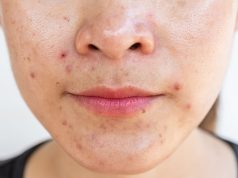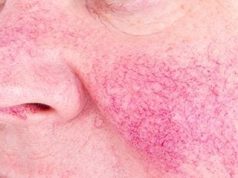Histological, gene expression findings differentiate TP from erythematotelangiectatic rosacea
MONDAY, March 23, 2015 (HealthDay News) — Telangiectatic photoaging (TP) is a distinct dermatological disorder from erythematotelangiectatic subtype of rosacea (ETR), according to a study published online March 23 in JAMA Dermatology. The research was published to coincide with the annual meeting of the American Academy of Dermatology, held from March 20 to 24 in San Francisco.
Yolanda R. Helfrich, M.D., from the University of Michigan Medical School in Ann Arbor, and colleagues compared the clinical, histological, and gene expression features of 26 participants with ETR, 20 with TP, and 11 age- and sex-matched controls.
The researchers identified greater transient erythema in the ETR group (38 percent graded moderate to severe) versus the TP (0 percent; P < 0.001) and control (0 percent; P = 0.002) groups. The ETR group also had greater nontransient erythema (50 percent graded moderate to severe) versus the TP (25 percent; P = 0.03) and control groups (0 percent; P < 0.001). Significantly less evidence of photodamage was seen among those with ETR versus TP (0 versus 40 percent graded 6 to 8 on a photonumeric scale; P = 0.01). Compared with TP, there was less histological evidence of photodamage in ETR. In ETR, there was increased gene expression of matrix metalloproteinase-3 (four-fold higher than TP samples and five-fold higher than controls samples; both P = 0.004).
“These data demonstrate that TP is a distinct clinical entity from ETR that can be distinguished on the basis of clinical, histologic, and gene expression findings,” the authors write.
Two authors disclosed financial ties to the pharmaceutical industry.
Abstract
Full Text
Editorial
More Information
Copyright © 2015 HealthDay. All rights reserved.








